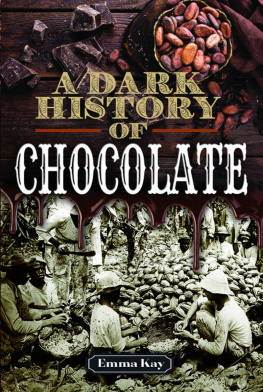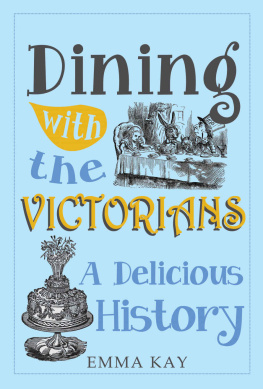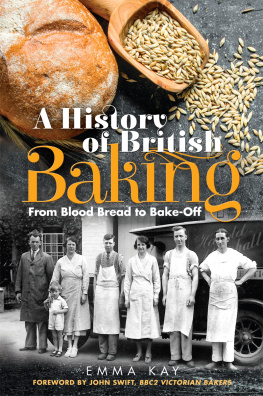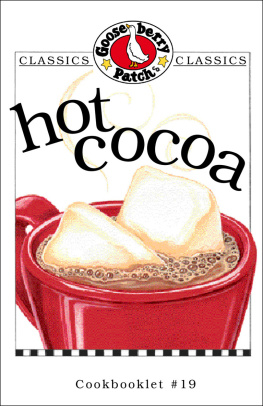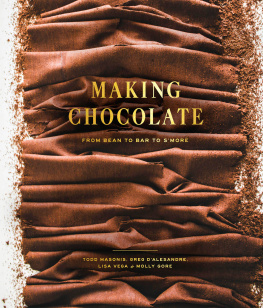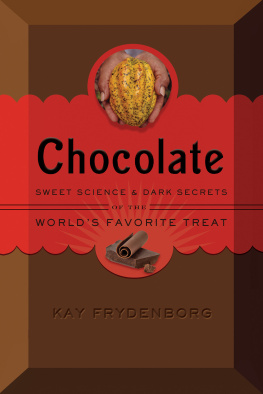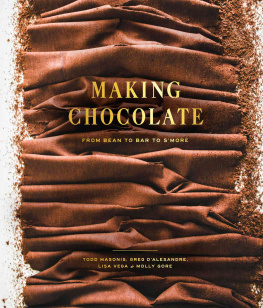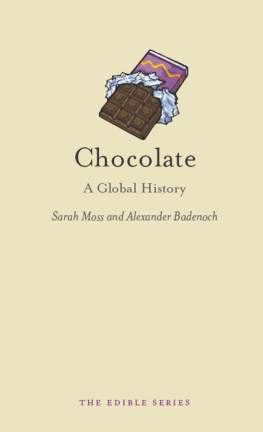Pagebreaks of the print version

A DARK HISTORY OF
CHOCOLATE
A DARK HISTORY OF
CHOCOLATE
EMMA KAY
First published in Great Britain in 2021 by
PEN AND SWORD HISTORY
An imprint of
Pen & Sword Books Ltd
Yorkshire Philadelphia
Copyright Emma Kay, 2021
ISBN 978 1 52676 830 8
eISBN 978 1 52676 831 5
The right of Emma Kay to be identified as Author of this work has been asserted by her in accordance with the Copyright, Designs and Patents Act 1988.
A CIP catalogue record for this book is available from the British Library.
All rights reserved. No part of this book may be reproduced or transmitted in any form or by any means, electronic or mechanical including photocopying, recording or by any information storage and retrieval system, without permission from the Publisher in writing.
Pen & Sword Books Limited incorporates the imprints of Atlas, Archaeology, Aviation, Discovery, Family History, Fiction, History, Maritime, Military, Military Classics, Politics, Select, Transport, True Crime, Air World, Frontline Publishing, Leo Cooper, Remember When, Seaforth Publishing, The Praetorian Press, Wharncliffe Local History, Wharncliffe Transport, Wharncliffe True Crime and White Owl.
For a complete list of Pen & Sword titles please contact
PEN & SWORD BOOKS LIMITED
47 Church Street, Barnsley, South Yorkshire, S70 2AS, England
E-mail:
Website: www.pen-and-sword.co.uk
Or
PEN AND SWORD BOOKS
1950 Lawrence Rd, Havertown, PA 19083, USA
E-mail:
Website: www.penandswordbooks.com
Acknowledgements
I would like to thank a number of staff at Pen & Sword Books for their continued support and for allowing me to write another book for them, which was a joy. In particular, Claire Hopkins, designer Paul Wilkinson for the great book jacket, Lori Jones, Laura Hirst and Karyn Burnham for all their editing skills and the marvellously upbeat Charlie Simpson ever on the treadmill of promotion. And gratitude to Alan Murphy for giving me the ideas.
As always, I must give credit to my long-suffering husband and my gorgeous, patient son: both of them are inspiring, supportive and extremely tolerant when it comes to my work and career. And to friends, family and everyone in my life who continues to encourage me along the way as a food historian.
A special thank you also to The Cockington Chocolate Company in Devon, in particular Tony Fagan and Simon Storey. The angle of the book didnt end up going quite that way, but I learnt a lot from you!
Introduction
While researching this book I discovered a remarkable amount of information about chocolate and its historical connection with the bleaker aspects of global society. I knew, of course, that its origins were Mexican, and that cacao production was intrinsic to the murky world of slavery, but what I hadnt really considered was chocolates extraordinary capacity to both nurture and adulterate.
Perhaps it is best to start by exploring exactly what the word dark means in the context of the title.
I originally set out with the intention of interviewing chocolatiers and getting some insight into the pitfalls of working with chocolate politically and economically, as well as planning to investigate the historical impact of plantations, both the human and environmental consequences. What actually happened was a shift towards the scrutiny of stories in which chocolate itself has played a pivotal role, though not in the Valentines Day, fluffy bunnies and sweet dreams way, obviously, as this was always going to be a dark book: dark, as in the kind that encompasses a grim hopelessness, secretive motives and sinister opportunities. It is a word that has so many definitions its easy to lose yourself in the potential for exploring all of them. There will be occasions in this book, when you think to yourself, well hold on, thats a good thing isnt it? And yes, there will be the light that emerges from the dark, the hope that chocolate administers in desperate times, its ability to raise the spirits when all else around is chaos. Chocolate has both made men (and women) and broken them too. It has the potential to elevate confidence where inappropriateness prevails and the ability to camouflage death itself. Chocolate is both wondrous and destructive. It is light and dark, just like its different types.
Those of you reading this may already know something of the story of how Europe was introduced to chocolate, but what you might not fully comprehend is the somewhat unscrupulous narrative, from chocolates medicinal origins to its commercial excesses, with its potential to exploit, kill, drug and abuse in between.
But first I am going to use this bit of the book for its correct purpose, to introduce the reader to the origins of chocolate and its journey towards mainstream stardom throughout the world.
Theobroma Cacao (food of the gods) is a small tree native to the Americas. Growing to around 16-18ft high, with thin, oblong, pointed leaves, its flowers are small and eventually produce pods that can grow up to 10in long. Each one contains around fifty or more seeds, which, when ripe, are dried in the sun, becoming chocolate beans, or nuts. Despite its Greek god-like origins, theobromine is also a close relative of caffeine, both addictive and a stimulant.
Chocolate derives from the Maya words chacau and kaa or hot drink. This morphed into cacauhaltl and xocoatl , eventually becoming cacao. Cacao is the name applied to the plant or beans prior to processing, while chocolate refers to anything made out of the beans. Cocoa is the powdered form of chocolate, where half of the fat or cacao butter is removed from the chocolate liquor. The pods still need to be harvested by hand, which is a time-consuming, intensive and laborious process, undertaken with a machete. Each pod contains around forty beans and most cacao trees take at least three years to produce beans. These beans are fermented, dried, roasted and crushed. This separates the nib from the hull. The nibs are then ground, before being ready to make into a variety of chocolate products.
Cacao is believed to have originated in the Amazon some 4,000 years ago. The Maya worshipped an ancient fertility goddess of chocolate, flowers and fruit, who they named Ixcacao. She blessed the annual harvests and protected the people. The Popol Vuh, or the Book of the Community, was a narrative passed down orally by the Maya peoples, which was eventually recorded in writing in the 1500s. A more concise manuscript of these stories was transcribed later in the eighteenth century. It provides early accounts, myths and legends of the ancient indigenous communities of what we now know as Mexico, Belize, Guatemala, El Salvador, Nicaragua, Honduras and Costa Rica among others, sometimes referred to as Mesoamerica. This is where some of the earliest historical accounts of cacao originate. The Mayan god, Ekchuah, was the god of merchants and cacao planters. Those who owned cacao plantations held sacrificial rituals, offering up dogs unlucky enough to have cacao-coloured markings in Ekchuahs honour.
It is interesting to note that cacao fruit was often compared to almonds in early literary references. There is a physical similarity, and almonds and cacao have often traditionally been paired together in recipes. Both nuts can also help with reducing cholesterol. It was also popular for a time to mould chocolate into the shape of almonds, which Britain had been importing since at least the 1400s but which may have become an expensive commodity.

